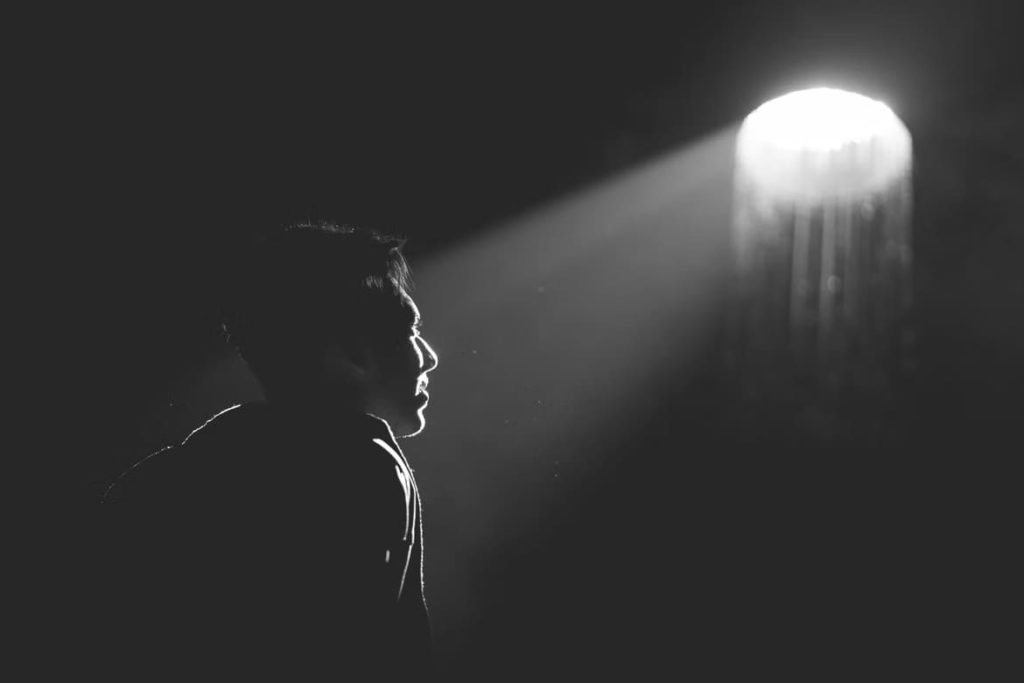Overhead Lighting in Cinematography: What Overhead Lighting Achieves
A cinematographer should be able to make use of all of the tools and techniques of their industry. Overhead lighting cinematography techniques aren’t the most common, but there are some examples of some really great uses of lighting from above.

Film lighting is potentially hard to control, and it can create some very harsh shadows, especially if it is the only soft light.
This means that, while being useful for cinematography, lighting overhead can also be a really tricky thing to master. Sometimes it could be placed as a key light if the scene needs that.
It could also be used as a fill light source to fill a shadow created by the low key lighting setups.
Why Use Overhead Lighting?
If you do it right, an overhead practical lighting setup can provide a really interesting effect. It tends to add intensity to a scene, especially if the harsh light source is used.
When you create your concept and start to plan how the film light you are making is going to look, you will also want to think a lot about mood.
The cinematographer’s job is to help to reflect and exaggerate the feel of the video with camera angles and of course, lighting angles.
In some scenarios, a softer key light source can be used with overhead film lighting, along with fill lights, and this provides a softer lighting effect, but one that can be used in darker, gloomier scenes.
For instance, in horror films or movies where the tension is meant to build up there are a lot of different techniques that can be used, but film lighting is used effectively by numerous directors and cinematographers.
One example is the scene where “Silva” is interrogated in the James Bond film, Skyfall. Check out the use of overhead lighting and how it creates quite an intense yet brooding effect.
This helps to set the mood of the film and reflect what is happening in the scene. In this example, the light is pretty harsh, which is a deliberate way to add to the intensity of the movie as it reaches a tense point.
The relationship between darkness and light is one of the biggest things to understand when making films, and cinematographers using film lighting techniques are using it in multiple genres and multiple styles.
Some have even been able to make use of it as a “one light” setup. A film, hard lighting look can be achieved, as can “Rembrandt lighting” which is technically overhead and to the side. This is used in a lot of portrait photography and can give a softer look to the film overall.
Overhead lighting has been used effectively in so many different varieties of films, and while some people will associate it with horror and thriller fans, the fact that you can use Rembrandt lighting (named after the famous painter) means it can be useful for a variety of styles.
Most of these effects are more likely to be used in film production rather than commercial videos, but part of the skill of a cinematographer is to know when these shots will work best.
How to Use Overhead Lighting:
If you want to use this kind of technique you need to know how to rig overhead light. In cinematography, a “grip” is the person who is in charge of setting up the key lights in the right place. They will be able to rig the lights safely and securely, and above your subject.
Though some basic lighting techniques use a slightly off-center approach, the most overhead light is directly above the subject or person who is on screen.
If you don’t use a harsh light, a larger, softer light can be a way to spread the cinematic lighting more and create less of an intense look.
Of course, when you are in the studio, it is important that you have the right team around you with the expertise to help you to know when to use these shots as well as cinematography techniques for rigging the overhead lights correctly.
At Insight Studios, our impressive crew can make sure that all of the lighting techniques as well as other movies cinematography techniques are used properly to get the best effects and create a video that is perfect for your needs.
Ready to take your ideas for the perfect video and let our team bring them to life in front of your eyes? We can work together on a concept for a variety of video styles including music videos cinematography and film projects which may use overhead light and other creative video effects.
We know the importance of visuals. To start the process, all you need to do is reach out to us today and we can talk about your project